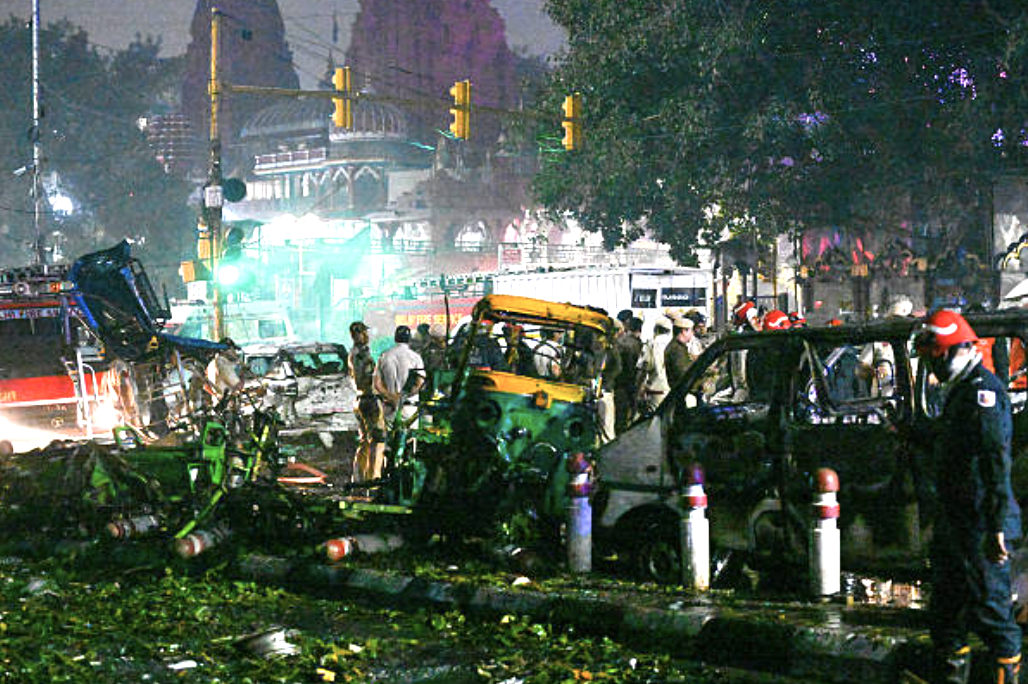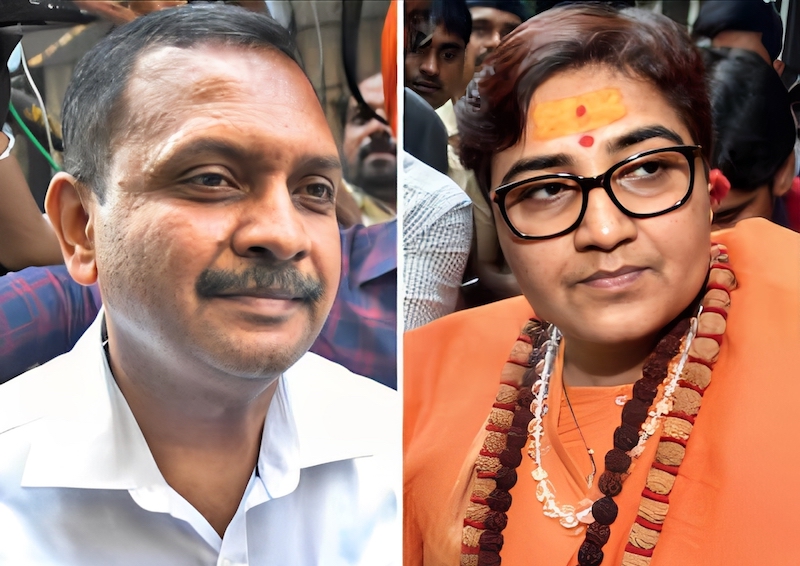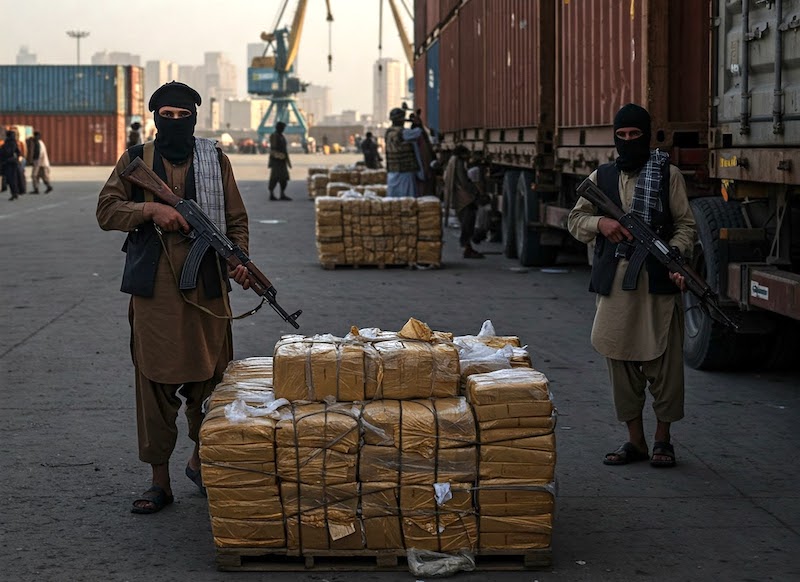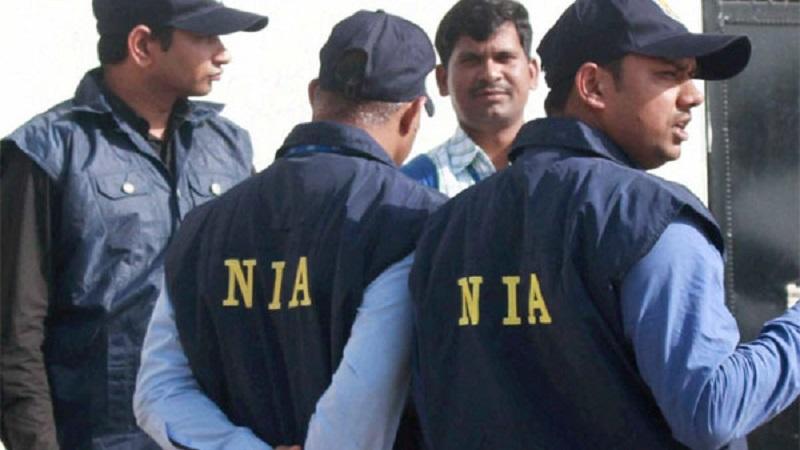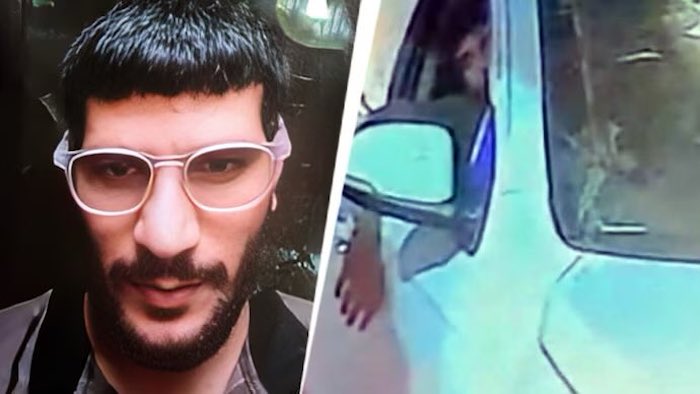 This combo image shows Dr Umar Mohammad (L), the prime suspect behind the blast, and him purportedly driving a Hyundai i20 (R), as captured by a CCTV camera. (Photo via X)
This combo image shows Dr Umar Mohammad (L), the prime suspect behind the blast, and him purportedly driving a Hyundai i20 (R), as captured by a CCTV camera. (Photo via X)
New Delhi: A 36-year-old doctor from Pulwama has been identified as the suspected suicide bomber behind Monday evening’s car blast near Red Fort that killed at least 12 people and injured more than 20 others, with investigators linking the attack to a sophisticated terror network involving medical professionals and Pakistan-based militant organisations.
Dr Umar Mohammad, also known as Umar U Nabi, was allegedly driving the white Hyundai i20 when it exploded at 6.52pm on November 10 near Gate No. 1 of the Red Fort Metro station. The death toll rose to 12 by Tuesday morning, with three more victims succumbing to their injuries overnight.
The blast has exposed what investigators describe as a “white collar terror ecosystem” — a network of educated professionals, predominantly doctors, who allegedly used their social legitimacy and professional positions to build infrastructure for terrorist activities whilst maintaining links with handlers across the border.
Arrests hours before blast
As India Sentinels reported on late Monday, the attack came just hours after a coordinated operation by Jammu & Kashmir police and Haryana police led to the arrest of two doctors and the seizure of 2,900 kilograms of explosives from Faridabad on Monday.
Dr Muzammil Ahmad Ganai, who worked in the emergency department of Al Falah Hospital in Faridabad, was arrested after investigators tracked Jaish-e-Muhammed posters threatening “revenge attacks” that appeared in Srinagar’s outskirts on October 19. A search of his rented premises yielded approximately 2,563 kilograms of explosives from one location and 360 kilograms of suspected ammonium nitrate from another site, along with weapons including a Chinese Star pistol, a Beretta pistol, an AK-56 rifle, and an AK Krinkov assault rifle.
Dr Adeel Ahmad Rather was arrested from Saharanpur in Uttar Pradesh, with police discovering an AK-47 rifle wrapped and stored in a bank locker.
Police sources said Mohammad panicked after learning of his associates’ arrests and triggered the blast. “Umar Mohammad, a doctor by profession, escaped from Faridabad after he came to know about the arrest of his accomplices from the Jaish module. Umar panicked and triggered the blast,” Delhi Police sources stated.
Eleven-hour journey traced
The Delhi Police reconstructed Mohammad’s final movements using CCTV footage from over 100 cameras. The car was first spotted outside Asian Hospital in Faridabad at 7.30am on November 10. It crossed the Badarpur toll plaza at 8.04am, entering Delhi at 8.13am, before being spotted near a petrol pump in Okhla Industrial Area at 8.20am.
After circulating through various parts of the capital, the vehicle entered a parking area adjacent to Sunehri Masjid near the Red Fort complex at 3.19pm, where it remained stationary for approximately three hours. Investigators noted that Mohammad did not leave the car during this period.
CCTV footage shows the car leaving the parking area between 6.22pm and 6.48pm, with images showing a masked driver wearing a blue and black T-shirt. At 6.52pm, the slow-moving vehicle stopped at a red light on Netaji Subhash Marg, where the explosion occurred.
“It is possible that the actual target might have been elsewhere, as the car was moving slowly. All possible angles, including alternate targets, are being examined,” investigators said while talking to reporters.
Unusual blast characteristics
Preliminary forensic findings suggest the blast was caused by a combination of ammonium nitrate, fuel oil, and detonators — materials identical to those seized from the Faridabad terror module. However, investigators noted unusual characteristics.
“We have not found any pellet or puncture in the body of the injured, which is unusual in a bomb blast,” police sources said. The site did not show a typical crater, and victims did not exhibit the splinter wounds commonly associated with conventional bomb blasts.
The explosion gutted six cars, four motorcycles, and three e-rickshaws, with human remains and vehicle parts flung across a radius of 20 to 25 metres. Body parts and hand fragments were found in the damaged vehicle, with DNA testing being conducted to confirm whether the remains belong to Mohammad.
Multi-state network uncovered
By Tuesday, investigators had arrested eight to 10 people across multiple states, with six to seven of those detained being doctors.
Dr Shaheen Sayeed, a female doctor from Lucknow arrested from Faridabad, was allegedly tasked with establishing Jamaat-ul-Mominaat, the women’s wing of Jaish-e-Muhammed in India. The women’s wing is headed in Pakistan by Sadia Azhar, sister of the Jaish-e-Muhammed chief, Masood Azhar.
The police recovered an AK Krinkov rifle with three magazines, a pistol with live rounds, and two empty cartridges from a Haryana-registered Swift Dzire car reportedly belonging to Sayeed. Her brother, Dr Parvez Ansari, who had resigned from Integral University a week earlier, was arrested in Lucknow along with their father.
From Jammu & Kashmir, three suspects were arrested from Pampore in Pulwama district. Tariq Ahmed Malik, a 44-year-old security guard, was identified as being involved in passing the Hyundai i20 to Mohammad. Aamir Rashid Mir, a 27-year-old plumber, and his brother Umar Rashid were also detained.
The car’s ownership trail was complex, having changed hands multiple times before reaching Mohammad. It was first registered in 2014 to Mohd Salman, a resident of Gurgaon, before being sold through several owners in Ambala and elsewhere.
Revenge motive suggested
Investigators believe the Delhi blast may have been planned partly as revenge for Operation Sindoor, India’s response to a terror attack, which killed Yusuf — husband of Sadia Azhar and a mastermind of the Kandahar hijacking — on May 7.
Intelligence officials said an internal communication recovered from the module suggested growing pressure within Jaish-e-Muhammed following intensified counter-insurgency operations in Jammu & Kashmir. The scale of explosives recovered suggested the group was potentially planning multiple high-intensity blasts across Delhi and other northern states.
NIA takes over investigation
The Union home minister, Amit Shah, formally handed over the investigation to the National Investigation Agency on November 11 after chairing a high-level security review meeting. An FIR was registered under sections 16 and 18 of the Unlawful Activities (Prevention) Act, which deal with punishment and conspiracy for terrorist attacks.
“Chaired review meetings on the Delhi car blast with the senior officials. Instructed them to hunt down each and every culprit behind this incident. Everyone involved in this act will face the full wrath of our agencies,” Shah posted on X on Tuesday.
The prime minister, Narendra Modi, who was on a two-day visit to Bhutan when the blast occurred, made a strong statement vowing that those responsible would be brought to justice. Speaking in Thimphu, Modi said: “The horrific incident that took place in Delhi yesterday evening has deeply saddened everyone. I understand the grief of the affected families.”
“I was in touch with all the agencies investigating this incident throughout last night,” Modi said, before adding: “The conspirators behind this will not be spared. All those responsible will be brought to justice.”
States tighten security
In the wake of the blast, the Archaeological Survey of India announced that Red Fort would remain closed for three days. The Delhi Police issued traffic advisories restricting vehicle movement on Netaji Subhash Marg.
Mumbai was placed on high alert, with security ramped up at important locations across Maharashtra’s capital. In Uttar Pradesh, security forces were deployed across the state with vehicles being thoroughly checked in multiple cities. Uttarakhand was placed on high alert with police intensifying security across all borders and crowded locations.
Security was tightened at the India-Nepal border, with the Border Security Force and local police closely monitoring all visitors. Major cities including Hyderabad, Bengaluru, Kolkata, Jaipur, and Dehradun all implemented enhanced security measures.
Human cost and community response
Among the identified victims was 22-year-old Pankaj Sahni, a cab driver from Bihar’s Samastipur, who was ferrying a relative when the blast struck. The injured included 12 residents of Delhi and eight from other states including Uttar Pradesh, Uttarakhand, and Himachal Pradesh.
Earlier, as India Sentinels had reported, the Delhi government announced financial assistance of ₹10 lakh for families of those who lost their lives, ₹5 lakh for those permanently disabled, and ₹2 lakh for the seriously injured.
Prominent Muslim bodies voiced concern over the blast. The All India Muslim Personal Law Board president, Maulana Khalid Saifullah Rahmani, said: “If it was an act of terrorism, it is deeply alarming, raising serious questions about the effectiveness of the country’s security apparatus.”
Jamaat-e-Islami Hind president Syed Sadatullah Husaini demanded a transparent and high-level investigation, calling for immediate accountability for security lapses.
The United States expressed condolences and said it continued to closely monitor the situation.
New face of terror
Security experts described the case as revealing a troubling evolution in militant tactics. “This is not about gunmen in forests anymore,” said one officer involved in the investigation. “This is about professionals — doctors, engineers, teachers — using their social legitimacy to build and hide the infrastructure of terror.”
The involvement of medical professionals in the terror network represents what investigators call a new model where educated individuals with no previous criminal background use their professional positions and social standing to provide cover and logistics for terrorist organisations.
Mohammad completed his MBBS from Government Medical College Srinagar in 2017 and was reportedly employed at Al Falah Medical College in Faridabad, the same institution where two other arrested doctors worked. Born in Pulwama in 1989, he was described by investigators as “quiet and methodical”.
As investigation teams work to piece together the complete picture of the conspiracy, questions remain about how such a large quantity of explosives and weapons could be stored and transported across state lines without detection, and how educated professionals managed to evade suspicion while building this terror infrastructure.
With multiple suspects in custody, authorities have expressed confidence that they will uncover the complete conspiracy. However, the attack has raised uncomfortable questions about security preparedness, intelligence gaps, and the ability of determined terror networks to plan and execute attacks even in heavily secured areas of the national capital.

